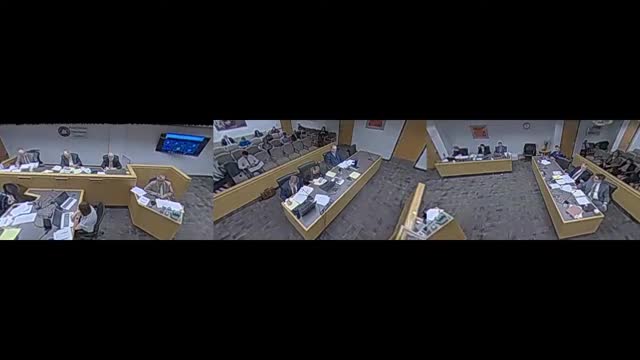Insurance Expert Analyzes Wildfire Risk and Senate Bill 224's Impact on Premiums
March 23, 2025 | Utah Public Service Commission, Utah Subcommittees, Commissions and Task Forces, Utah Legislative Branch, Utah
This article was created by AI summarizing key points discussed. AI makes mistakes, so for full details and context, please refer to the video of the full meeting. Please report any errors so we can fix them. Report an error »

During a recent government meeting in Utah, discussions centered around the implications of Senate Bill 224 on insurance premiums and wildfire risk assessments, highlighting significant concerns for residents and businesses alike.
One of the key topics was the allocation factor for insurance premiums, which some experts believe may be lower due to the new legislation that caps non-economic damages. This change could potentially reduce liability for insurance companies, leading to lower premiums for consumers. However, the exact impact remains uncertain, as further analysis is needed to quantify these changes.
The conversation also delved into the complexities of wildfire risk in Utah. While some participants argued that the state has a high probability of wildfires, others cautioned that this assessment must consider the potential costs associated with these events. For instance, a wildfire in a densely populated area could result in significantly higher damages compared to one in a less populated region. This distinction is crucial for understanding how insurance companies evaluate risk and set premiums.
Participants emphasized the importance of clear communication regarding wildfire risk, urging community members to ask critical questions about what "high risk" truly means. This clarity is essential for residents to grasp how these factors influence their insurance costs and overall safety.
As the discussions continue, the outcomes of these deliberations will play a vital role in shaping insurance policies and community preparedness for wildfire events in Utah. The meeting underscored the need for ongoing dialogue and education around these pressing issues, ensuring that residents are well-informed and equipped to navigate the complexities of insurance and risk management.
One of the key topics was the allocation factor for insurance premiums, which some experts believe may be lower due to the new legislation that caps non-economic damages. This change could potentially reduce liability for insurance companies, leading to lower premiums for consumers. However, the exact impact remains uncertain, as further analysis is needed to quantify these changes.
The conversation also delved into the complexities of wildfire risk in Utah. While some participants argued that the state has a high probability of wildfires, others cautioned that this assessment must consider the potential costs associated with these events. For instance, a wildfire in a densely populated area could result in significantly higher damages compared to one in a less populated region. This distinction is crucial for understanding how insurance companies evaluate risk and set premiums.
Participants emphasized the importance of clear communication regarding wildfire risk, urging community members to ask critical questions about what "high risk" truly means. This clarity is essential for residents to grasp how these factors influence their insurance costs and overall safety.
As the discussions continue, the outcomes of these deliberations will play a vital role in shaping insurance policies and community preparedness for wildfire events in Utah. The meeting underscored the need for ongoing dialogue and education around these pressing issues, ensuring that residents are well-informed and equipped to navigate the complexities of insurance and risk management.
View full meeting
This article is based on a recent meeting—watch the full video and explore the complete transcript for deeper insights into the discussion.
View full meeting

